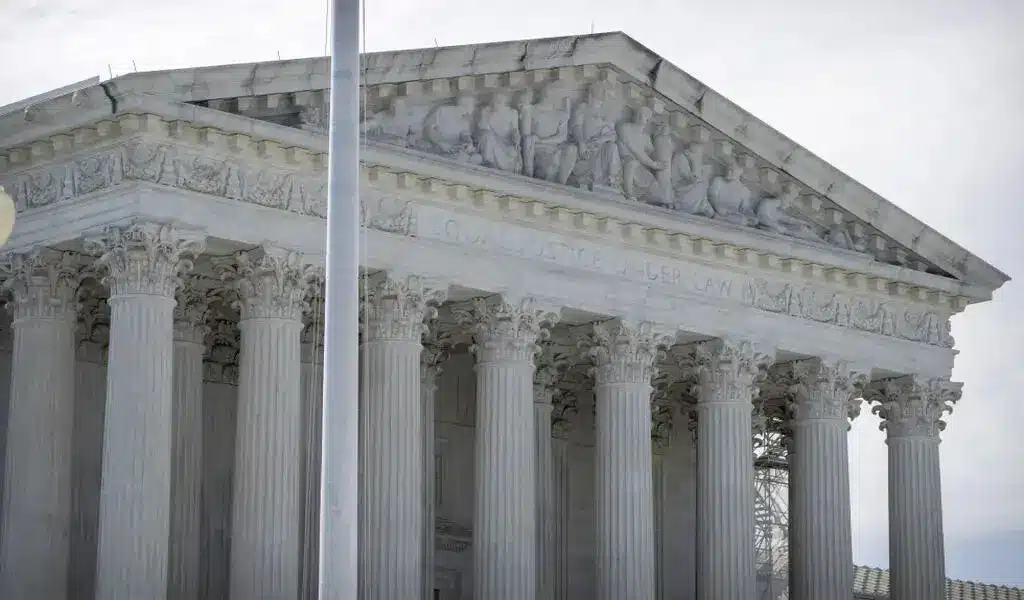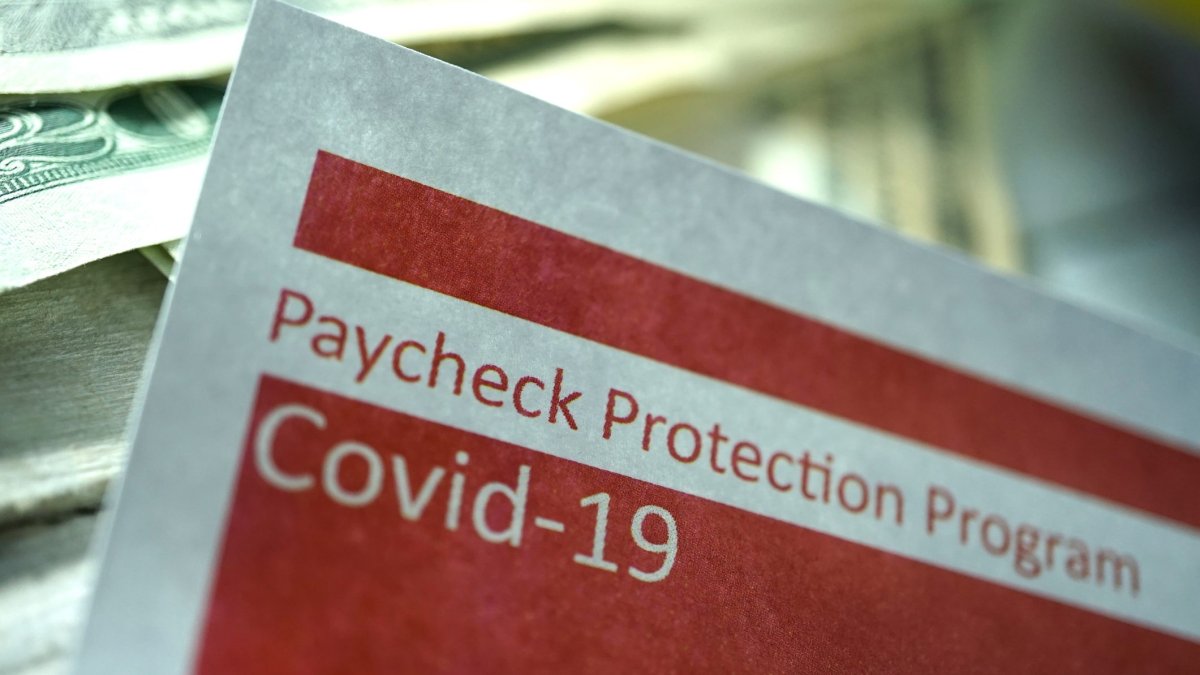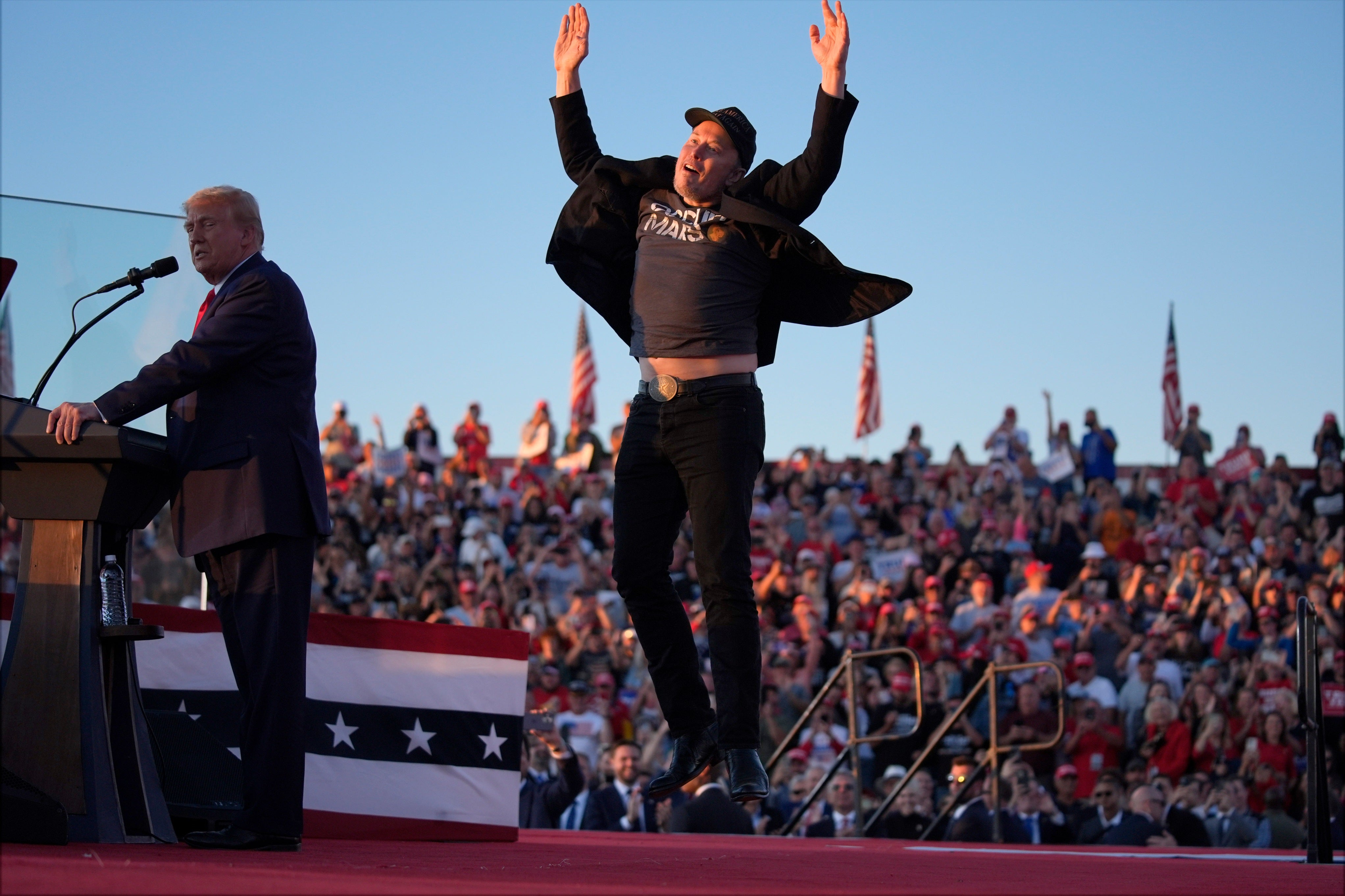News
The Great Biden Gift: $280 Billion in COVID-19 Relief Cash Stolen
According to an Associated Press investigation, thieves took more than $280 billion in Biden COVID-19 relief cash; another $123 billion was lost or misapplied. The total loss reflects 10% of the $4.2 trillion in COVID disaster funds distributed by the US Biden government thus far.
This figure is bound to rise as investigators delve deeper into thousands of potential schemes.
According to investigators and other experts, the government exercised too little control during the pandemic’s early phases and imposed too few limits on applicants in order to fast spend trillions in relief funds. In summary, they claim that the heist was just too simple.
“Here was this sort of endless pot of money that anyone could access,” Dan Fruchter, chief of the fraud and white-collar crime unit of the United States Attorney’s Office for the Eastern District of Washington, said. “People were duped into thinking it was a socially acceptable thing to do, even though it wasn’t legal.”
The Biden DOJ has charged over 2,230 people with pandemic-related fraud charges and is conducting thousands of investigations in COVID-19 relief cash fraud.
The majority of the stolen funds came from three huge pandemic-relief efforts intended to assist small businesses and unemployed individuals in surviving the economic upheaval created by the outbreak.
The fraud, according to Michael Horowitz, the U.S. Justice Department inspector general who chairs the federal Pandemic Response Accountability Committee, is “clearly in the tens of billions of dollars” and may potentially approach $100 billion in COVID-19 relief cash.
“I’m hesitant to speculate on how much it is,” he remarked. “But clearly it’s substantial, and the final accounting is still at least a couple of years away.” According to the committee’s most current accounting, around one-fifth of the $5.2 trillion has yet to be paid out.
Never before has so much federal disaster aid been pumped into the American economy so quickly. “The largest rescue package in American history,” according to US Comptroller General Gene Dodaro.
The COVID-19 relief cash masked multi billion-dollar errors.
According to the IRS, a $837 billion programme, for example, succeeded 99% of the time in distributing economic stimulus funds to the correct taxpayers. Despite this, a 1% failure rate resulted in roughly $8 billion going to “ineligible individuals,” according to a Biden Treasury Department inspector general.
The health-care crisis propelled the Small Business Administration, a relatively unknown department, into an unprecedented position. For example, in the seven decades preceding the pandemic, the SBA had made catastrophe loans totaling $67 billion.
When the pandemic hit, the organisation was tasked with overseeing two large relief efforts: the COVID-19 Economic Injury Disaster Loan and Paycheck Protection programmes, which would eventually total more than a trillion dollars. Between March 2020 and the end of July 2020, the agency made 3.2 million COVID-19 economic injury disaster loans totaling $169 billion, while also launching the massive new Paycheck Protection Programme.
Guardrails to protect government funds were discarded in haste. Prospective borrowers might “self-certify” that their loan applications were accurate. The CARES Act also prohibited the SBA from reviewing tax return transcripts, which may have weeded out dishonest or unworthy candidates; this decision was later changed at the end of 2020.
“If you open up the bank window and say, give me your application and just promise me you really are who you say you are, you attract a lot of fraudsters, and that’s what happened here,” Horowitz said.
The SBA inspector general’s office estimates that fraud in the COVID-19 relief cash economic injury disaster loan programme is worth $86 billion and in the Paycheck Protection programme is worth $20 billion. The watchdog is anticipated to issue revised loss statistics in the coming weeks, which are likely to be significantly higher.
Incompetent Biden Administration Officials
Inspector General Hannibal “Mike” Ware and his team at the SBA are swamped with pandemic audits and investigations. The office has a backlog of over 80,000 actionable leads, nearly a century’s worth of work.
Horowitz chastised the government for failing to use the Treasury Department’s “Do Not Pay” database, which was designed to prevent government funds from going to debarred contractors, fugitives, convicts, or those convicted of tax fraud. He claimed that the reviews might have been completed swiftly.
According to Han Nguyen, an SBA official, “the vast majority of the likely fraud originated in the first nine months of the pandemic programmes.” According to Nguyen, the SBA’s “working estimate” for the COVID-19 relief cash economic injury disaster loan programme discovered $28 billion in possible fraud.
According to Labour Department Inspector General Larry Turner’s congressional testimony, fraud in pandemic unemployment aid programmes totals $76 billion. That is an optimistic estimate. According to his evidence, another $115 billion was improperly distributed to persons who should not have received benefits.
Scammers stole billions in benefits
According to a September “alert memo” published by his office, Turner’s goal of identifying all of the pandemic unemployment insurance fraud has been exacerbated by a lack of cooperation from the federal Bureau of Prisons. Scammers stole billions of dollars in benefits by using the Social Security numbers of federal prisoners.
According to CDC data, hospitalisations for the virus have progressively fallen, and Biden declared the epidemic a national emergency in April.
On Capitol Hill, however, lawmakers have not left the outbreak behind them and are embroiled in a bitter discussion over the success of rescue expenditures and who is to responsible for the theft.
Republicans say that too much government spending generates fraud, waste, and inflation. Democrats have maintained that all of Washington’s financial muscle saved lives, businesses, and jobs.
Republicans and Democrats did, however, reach an agreement last year on legislation that would allow the federal government additional time to catch fraudsters. In August, Biden signed legislation to extend the statute of limitations for crimes involving the SBA’s two largest programmes from five to ten years.
The extra time will assist federal prosecutors in untangling epidemic fraud cases, which frequently involve identity theft and fraudsters from other countries over the COVID-19 relief cash. However, there’s no assurance they’ll catch everyone who jumped at the chance for a quick buck. They are also preoccupied with crimes unconnected to pandemic relief monies.
“Do we have enough cases and leads to start doing them in 2030?” “We could absolutely do it,” Fruchter, the federal prosecutor for the Eastern District of Washington, said. “However, my experience tells me that other priorities will inevitably arise and must be addressed.” Unfortunately, our office lacks a dedicated pandemic fraud team.”

News
Google’s Search Dominance Is Unwinding, But Still Accounting 48% Search Revenue

Google is so closely associated with its key product that its name is a verb that signifies “search.” However, Google’s dominance in that sector is dwindling.
According to eMarketer, Google will lose control of the US search industry for the first time in decades next year.
Google will remain the dominant search player, accounting for 48% of American search advertising revenue. And, remarkably, Google is still increasing its sales in the field, despite being the dominating player in search since the early days of the George W. Bush administration. However, Amazon is growing at a quicker rate.
Google’s Search Dominance Is Unwinding
Amazon will hold over a quarter of US search ad dollars next year, rising to 27% by 2026, while Google will fall even more, according to eMarketer.
The Wall Street Journal was first to report on the forecast.
Lest you think you’ll have to switch to Bing or Yahoo, this isn’t the end of Google or anything really near.
Google is the fourth-most valued public firm in the world. Its market worth is $2.1 trillion, trailing just Apple, Microsoft, and the AI chip darling Nvidia. It also maintains its dominance in other industries, such as display advertisements, where it dominates alongside Facebook’s parent firm Meta, and video ads on YouTube.
To put those “other” firms in context, each is worth more than Delta Air Lines’ total market value. So, yeah, Google is not going anywhere.
Nonetheless, Google faces numerous dangers to its operations, particularly from antitrust regulators.
On Monday, a federal judge in San Francisco ruled that Google must open up its Google Play Store to competitors, dealing a significant blow to the firm in its long-running battle with Fortnite creator Epic Games. Google announced that it would appeal the verdict.
In August, a federal judge ruled that Google has an illegal monopoly on search. That verdict could lead to the dissolution of the company’s search operation. Another antitrust lawsuit filed last month accuses Google of abusing its dominance in the online advertising business.
Meanwhile, European regulators have compelled Google to follow tough new standards, which have resulted in multiple $1 billion-plus fines.

Pixa Bay
Google’s Search Dominance Is Unwinding
On top of that, the marketplace is becoming more difficult on its own.
TikTok, the fastest-growing social network, is expanding into the search market. And Amazon has accomplished something few other digital titans have done to date: it has established a habit.
When you want to buy anything, you usually go to Amazon, not Google. Amazon then buys adverts to push companies’ products to the top of your search results, increasing sales and earning Amazon a greater portion of the revenue. According to eMarketer, it is expected to generate $27.8 billion in search revenue in the United States next year, trailing only Google’s $62.9 billion total.
And then there’s AI, the technology that (supposedly) will change everything.
Why search in stilted language for “kendall jenner why bad bunny breakup” or “police moving violation driver rights no stop sign” when you can just ask OpenAI’s ChatGPT, “What’s going on with Kendall Jenner and Bad Bunny?” in “I need help fighting a moving violation involving a stop sign that wasn’t visible.” Google is working on exactly this technology with its Gemini product, but its success is far from guaranteed, especially with Apple collaborating with OpenAI and other businesses rapidly joining the market.
A Google spokeswoman referred to a blog post from last week in which the company unveiled ads in its AI overviews (the AI-generated text that appears at the top of search results). It’s Google’s way of expressing its ability to profit on a changing marketplace while retaining its business, even as its consumers steadily transition to ask-and-answer AI and away from search.

Google has long used a single catchphrase to defend itself against opponents who claim it is a monopoly abusing its power: competition is only a click away. Until recently, that seemed comically obtuse. Really? We are going to switch to Bing? Or Duck Duck Go? Give me a break.
But today, it feels more like reality.
Google is in no danger of disappearing. However, every highly dominating company faces some type of reckoning over time. GE, a Dow mainstay for more than a century, was broken up last year and is now a shell of its previous dominance. Sears declared bankruptcy in 2022 and is virtually out of business. US Steel, long the foundation of American manufacturing, is attempting to sell itself to a Japanese corporation.
SOURCE | CNN
News
2024 | Supreme Court Won’t Hear Appeal From Elon Musk’s X Platform Over Warrant In Trump Case

Washington — Trump Media, The Supreme Court announced Monday that it will not hear an appeal from social media platform X about a search warrant acquired by prosecutors in the election meddling case against former President Donald Trump.
The justices did not explain their rationale, and there were no recorded dissents.
The firm, which was known as Twitter before being purchased by billionaire Elon Musk, claims a nondisclosure order that prevented it from informing Trump about the warrant obtained by special counsel Jack Smith’s team violated its First Amendment rights.
The business also claims Trump should have had an opportunity to exercise executive privilege. If not reined in, the government may employ similar tactics to intercept additional privileged communications, their lawyers contended.
Supreme Court Won’t Hear Appeal From Elon Musk’s X Platform Over Warrant In Trump Case
Two neutral electronic privacy groups also joined in, urging the high court to hear the case on First Amendment grounds.
Prosecutors, however, claim that the corporation never shown that Trump utilized the account for official purposes, therefore executive privilege is not a problem. A lower court also determined that informing Trump could have compromised the current probe.

Trump utilized his Twitter account in the weeks preceding up to his supporters’ attack on the Capitol on January 6, 2021, to spread false assertions about the election, which prosecutors claim were intended to create doubt in the democratic process.
The indictment describes how Trump used his Twitter account to encourage his followers to travel to Washington on Jan. 6, pressuring Vice President Mike Pence to reject the certification, and falsely claiming that the Capitol crowd, which battered police officers and destroyed glass, was peaceful.
Supreme Court Won’t Hear Appeal From Elon Musk’s X Platform Over Warrant In Trump Case
That case is now moving forward following the Supreme Court’s verdict in July, which granted Trump full immunity from criminal prosecution as a former president.
The warrant arrived at Twitter amid quick changes implemented by Musk, who bought the company in 2022 and has since cut off most of its workforce, including those dedicated to combating disinformation and hate speech.
SOURCE | AP
News
The Supreme Court Turns Down Biden’s Government Appeal in a Texas Emergency Abortion Matter.

(VOR News) – A ruling that prohibits emergency abortions that contravene the Supreme Court law in the state of Texas, which has one of the most stringent abortion restrictions in the country, has been upheld by the Supreme Court of the United States. The United States Supreme Court upheld this decision.
The justices did not provide any specifics regarding the underlying reasons for their decision to uphold an order from a lower court that declared hospitals cannot be legally obligated to administer abortions if doing so would violate the law in the state of Texas.
Institutions are not required to perform abortions, as stipulated in the decree. The common populace did not investigate any opposing viewpoints. The decision was made just weeks before a presidential election that brought abortion to the forefront of the political agenda.
This decision follows the 2022 Supreme Court ruling that ended abortion nationwide.
In response to a request from the administration of Vice President Joe Biden to overturn the lower court’s decision, the justices expressed their disapproval.
The government contends that hospitals are obligated to perform abortions in compliance with federal legislation when the health or life of an expectant patient is in an exceedingly precarious condition.
This is the case in regions where the procedure is prohibited. The difficulty hospitals in Texas and other states are experiencing in determining whether or not routine care could be in violation of stringent state laws that prohibit abortion has resulted in an increase in the number of complaints concerning pregnant women who are experiencing medical distress being turned away from emergency rooms.
The administration cited the Supreme Court’s ruling in a case that bore a striking resemblance to the one that was presented to it in Idaho at the beginning of the year. The justices took a limited decision in that case to allow the continuation of emergency abortions without interruption while a lawsuit was still being heard.
In contrast, Texas has been a vocal proponent of the injunction’s continued enforcement. Texas has argued that its circumstances are distinct from those of Idaho, as the state does have an exemption for situations that pose a significant hazard to the health of an expectant patient.
According to the state, the discrepancy is the result of this exemption. The state of Idaho had a provision that safeguarded a woman’s life when the issue was first broached; however, it did not include protection for her health.
Certified medical practitioners are not obligated to wait until a woman’s life is in imminent peril before they are legally permitted to perform an abortion, as determined by the state supreme court.
The state of Texas highlighted this to the Supreme Court.
Nevertheless, medical professionals have criticized the Texas statute as being perilously ambiguous, and a medical board has declined to provide a list of all the disorders that are eligible for an exception. Furthermore, the statute has been criticized for its hazardous ambiguity.
For an extended period, termination of pregnancies has been a standard procedure in medical treatment for individuals who have been experiencing significant issues. It is implemented in this manner to prevent catastrophic outcomes, such as sepsis, organ failure, and other severe scenarios.
Nevertheless, medical professionals and hospitals in Texas and other states with strict abortion laws have noted that it is uncertain whether or not these terminations could be in violation of abortion prohibitions that include the possibility of a prison sentence. This is the case in regions where abortion prohibitions are exceedingly restrictive.
Following the Supreme Court’s decision to overturn Roe v. Wade, which resulted in restrictions on the rights of women to have abortions in several Republican-ruled states, the Texas case was revisited in 2022.
As per the orders that were disclosed by the administration of Vice President Joe Biden, hospitals are still required to provide abortions in cases that are classified as dire emergency.
As stipulated in a piece of health care legislation, the majority of hospitals are obligated to provide medical assistance to patients who are experiencing medical distress. This is in accordance with the law.
The state of Texas maintained that hospitals should not be obligated to provide abortions throughout the litigation, as doing so would violate the state’s constitutional prohibition on abortions. In its January judgment, the 5th United States Circuit Court of Appeals concurred with the state and acknowledged that the administration had exceeded its authority.
SOURCE: AP
SEE ALSO:
Could Last-Minute Surprises Derail Kamala Harris’ Campaign? “Nostradamus” Explains the US Poll.
-

 News4 years ago
News4 years agoLet’s Know About Ultra High Net Worth Individual
-
Entertainment2 years ago
Mabelle Prior: The Voice of Hope, Resilience, and Diversity Inspiring Generations
-
News11 years ago
Enviromental Groups Tell Mekong Leaders Lao Dam Evaluation Process Flawed
-

 Health4 years ago
Health4 years agoHow Much Ivermectin Should You Take?
-

 Tech3 years ago
Tech3 years agoTop Forex Brokers of 2023: Reviews and Analysis for Successful Trading
-

 Lifestyles3 years ago
Lifestyles3 years agoAries Soulmate Signs
-

 Entertainment3 years ago
Entertainment3 years agoWhat Should I Do If Disney Plus Keeps Logging Me Out of TV?
-

 Health3 years ago
Health3 years agoCan I Buy Ivermectin Without A Prescription in the USA?




